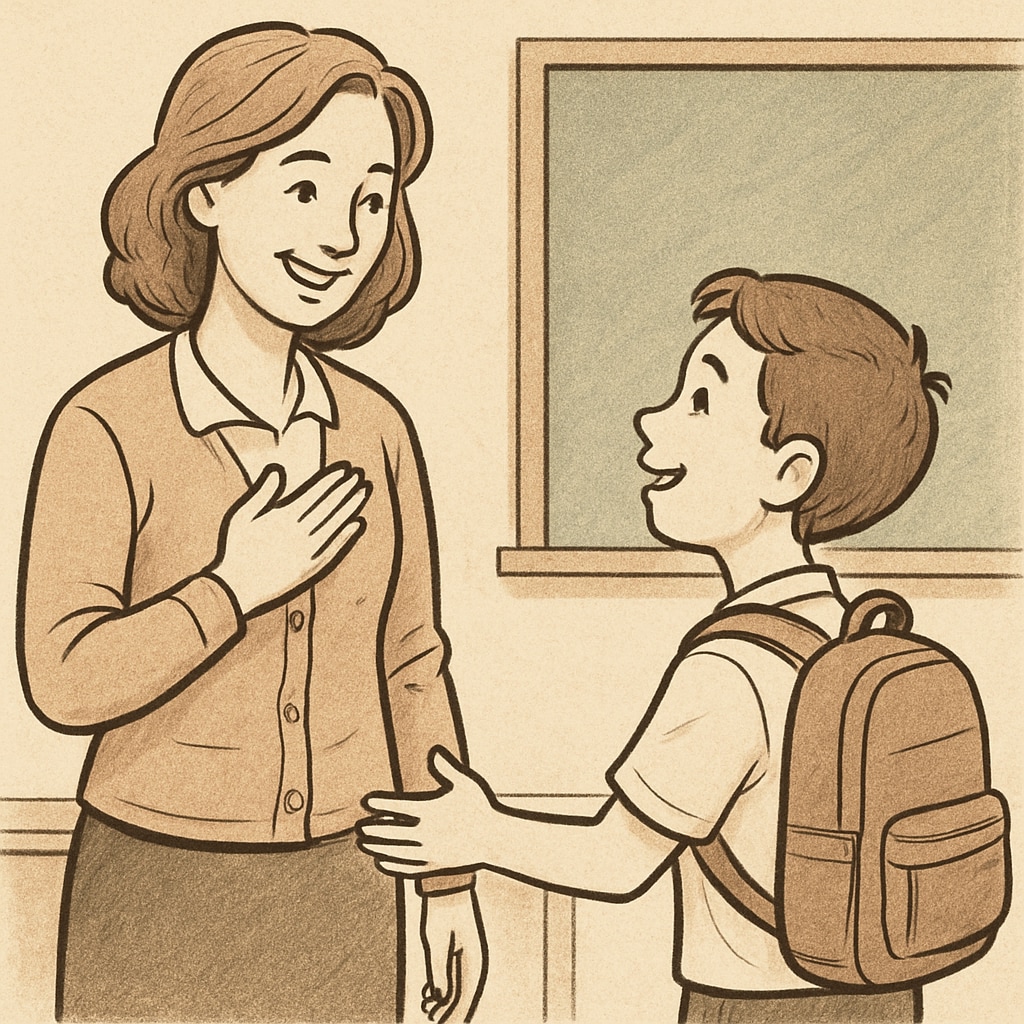In the realm of education, moments of heartfelt connection often serve as reminders of the profound impact teachers have on their students. One such occasion arose when a student, after a particularly engaging lesson, approached their teacher and simply said, “Thank you. That really helped me.” This seemingly small interaction encapsulates the essence of meaningful education—an environment built on respect, genuine listening, and heartfelt connection. The importance of these moments highlights why “student gratitude,” “teacher influence,” and “classroom interaction” are the cornerstones of effective learning.
The Ripple Effect of a Student’s Gratitude
When students express gratitude, it is more than just polite acknowledgment; it is evidence of their emotional engagement with the learning process. A simple “thank you” can serve as validation for a teacher’s efforts, reassuring them that their work is making a difference. For educators, these moments are not fleeting; they resonate deeply, reminding them of their purpose and the transformative effect of their role. In fact, such moments are often the most memorable aspects of a teaching career.

Research supports the notion that gratitude in the classroom fosters a positive feedback loop. According to a study by Britannica, expressions of gratitude can strengthen relationships and create a more supportive environment. This dynamic not only benefits the emotional climate but also enhances student performance, as learners are more likely to engage in environments where they feel valued and heard.
Building Respectful and Impactful Classroom Interactions
At the heart of every meaningful “thank you” lies a teacher who has created a respectful and inclusive learning environment. Respect is earned through consistent actions—listening to students, valuing their opinions, and fostering an atmosphere where everyone feels seen and heard. Teachers who prioritize genuine interactions help students feel safe to express their thoughts, ask questions, and even admit when they are struggling.
For example, a teacher who pauses to check in with a struggling student, or who takes time to acknowledge a unique perspective shared during a discussion, demonstrates the power of empathy and attentive listening. Over time, these small acts of understanding build trust and encourage students to reciprocate with openness and gratitude.

Furthermore, meaningful classroom interactions don’t just benefit students. They also ignite a sense of fulfillment in teachers. According to the Positive Psychology movement, fostering strong interpersonal connections is one of the keys to happiness and motivation—a sentiment that applies just as much in the classroom as it does in life.
Creating a Warm and Supportive Educational Environment
So, how can educators cultivate a space where moments of gratitude flourish? The answer lies in creating a warm and supportive atmosphere, grounded in mutual respect and empathy. Here are a few actionable strategies:
- Prioritize active listening: Make eye contact, nod, and repeat key points to show students their voices matter.
- Encourage open communication: Let students know it’s safe to share their thoughts, ask questions, or even express when they feel uncertain.
- Celebrate small victories: Acknowledge both academic and personal achievements to boost confidence and morale.
- Be approachable: Maintain an open-door policy where students feel comfortable seeking advice or simply sharing their thoughts.
As a result of these practices, students are more likely to experience a sense of belonging and trust, which in turn fuels their willingness to engage and express gratitude. These seemingly small efforts can create a ripple effect, positively impacting the entire classroom dynamic.
In conclusion, the power of a student’s gratitude lies in its ability to illuminate the deeper values of education. Teachers who foster respectful, empathetic, and engaging interactions pave the way for these moments to occur. While the words “thank you” may seem simple, their significance lies in what they represent—a bridge of understanding and mutual respect that defines the true essence of meaningful education.
Readability guidance: Short paragraphs and active voice were used to enhance clarity. Lists provide practical strategies, while transitions (e.g., “for example,” “as a result”) ensure smooth reading.


